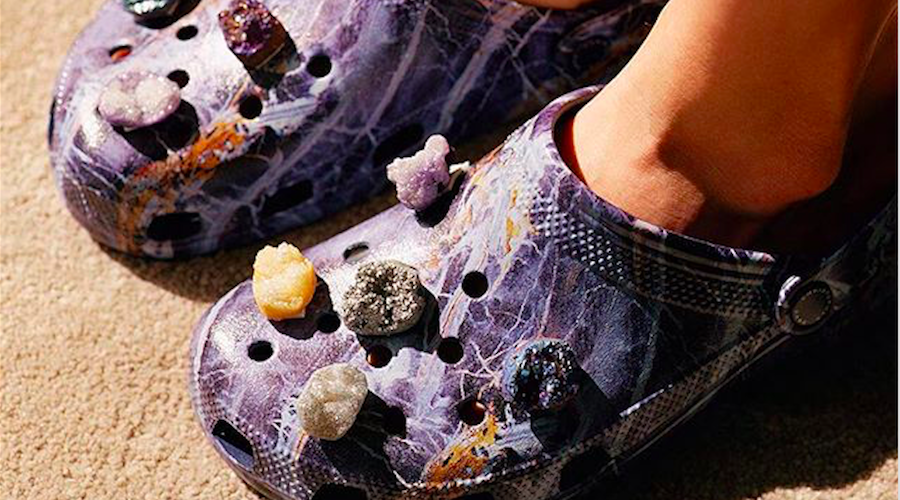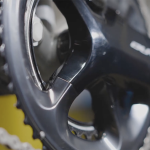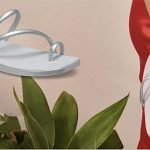Crocs Inc., posting another steep quarterly loss, said it plans to close approximately 25 percent of its store base over the next two years while announcing that a new CEO will guide its turnaround efforts.
Gregg Ribatt will step down on June 1 and will be replaced by Andrew Rees, who joined Crocs two years ago as president. Ribatt will remain on the company’s board.
On a conference call with analysts, Ribatt said he and Crocs’ board determined that the company is in a position to streamline its leadership structure and consolidate the president and CEO roles.
“Andrew and I worked side-by-side over the past few years, and I’ve witnessed firsthand his strength as both a strategic thinker and a leader,” said Ribatt. “I greatly enjoyed working with him and look forward to continuing to do so as he moves into his new role. I believe fully that Crocs will be in good hands under his direction.”
At the same time, the company made a number of other leadership changes. Michelle Poole, SVP of global product and merchandising, is also assuming responsibility for marketing. Ann Chan, current SVP and GM of Europe, will transition to the role of SVP and GM of Americas. David Thompson, current SVP of Asia, Middle East and Africa, is also assuming responsibility for Europe. Adam Michael was promoted to SVP of global e-commerce.
The loss in the quarter came to $44.4 million, or 60 cents per share, compared against a loss of $73.9 million, or $1.01, in the same period a year ago. Excluding non-recurring charges, the non-GAAP net loss came to $43.1 million, or a 9 percent improvement compared to the same period last year. The company absorbed charges of $1.4 million in the latest quarter versus $26.8 million a year ago.
Revenues in the quarter were down 10.2 percent to $187.4 million, in line with guidance. On a constant currency basis, revenues decreased 10.5 percent.
Wholesale revenues declined 10.7 percent, as expected, due to efforts to reduce sales to discount channels, primarily in Europe and the Americas. In Asia, wholesale revenues were down due to the sale of its South Africa business earlier in the year. At-once orders also came in slightly lower than planned, as retailers continue to be cautious with open-to-buy dollars and focused on reducing their own inventories.
Direct-to-consumer sales dropped 9.9 percent and comps were down 7.7 percent. Retail suffered high-single-digit traffic declines in the Americas and double-digit traffic declines in Asia. Improving conversion rates and UPTs (units per transaction) couldn’t offset the slowdown in traffic. Crocs reduced its full-price retail count by 47 to end the year with 228, down from 275 at the end of 2015. Its outlet store count was increased by 46 to close with 232. Total store count at year end was 558, compared to 559 last year.
E-commerce declined 9.7 percent in the fourth quarter, but was still ahead 7.9 percent for the year.
By region, Americas revenue in the quarter was $93.1 million, down 9.3 percent versus the prior year. Wholesale revenue in the Americas was down 9.9 percent, driven by lower at-once sales. Retail sales in the Americas declined 7.1 percent, reflecting a negative 5.6 percent comp and six fewer stores compared to the same period last year. E-commerce sales in the Americas region declined 12.6 percent, resulting in an Americas DTC comp of negative 8 percent.
Rees on the call said the weak traffic in the U.S. was due to reduced marketing activity compared to last year’s fourth quarter, a shift in purchasing activity from its websites to sites hosted by large e-tailers offering its product and a “focus on less deep discounting and end-of-life product available.”
In Asia, revenue in the quarter was $68.8 million, down 9.8 percent versus prior year. Wholesale revenues were down 5.3 percent as a result of the sale of its South African business in April 2016. Retail sales in Asia declined 16.6 percent, reflecting a negative 12.1 percent comp, despite the addition of nine stores compared to last year. Gains in conversion and UPT could not offset double-digit traffic declines. E-commerce sales declined 7 percent, resulting in an Asia DTC comp of negative 9.6 percent. Weak sales in China on Singles’ Day accounted for the shortfall versus expectations for the region.
In Europe, revenue was $25.4 million, down 14.2 percent versus prior year. As planned, sales were reduced in the company’s discount channel, leading to a 23.3 percent reduction in wholesale revenue. Retail sales in Europe declined 1.4 percent. A retail comp of positive 1 percent was offset by four fewer stores compared to Q4 2015. E-commerce sales in Europe declined 0.8 percent, resulting in its European DTC comp being essentially flat.
Regarding product initiatives, Rees noted that customers are responding favorably to new colors and prints added to its core molded product line. Both lined and unlined multi clogs, typically reserved for warmer months, sold well in the fall season.
“We’ve also confirmed the importance of any newness to our iconic molded footwear through new color and graphic introductions, and through the expanded use of license characters,” said Rees.
Key collections including Isabella, Swiftwater and CitiLane Roka “are working well” and poised for growth although a few of its winter lines, specifically Sarah and Lina, “proved to be a bit too fashion forward.”
Rees added, “Our spring/summer 2017 collection rolled out to warm-weather doors in November and early reads are encouraging. Going forward, our innovation and newness will be most heavily concentrated on core clogs and sandal, slips and slides where we see the greatest opportunity for growth.”
On the marketing side, a new Come As You Are campaign launching in April and starring Drew Barrymore, John Cena, Yoona Lim and Henry Lau is already generating buzz. Said Rees, “Our Twitter postings are most viewed in the company’s history, and we are generating the highest engagement of any social media campaign that run to date.”
For the full year, revenues were $1.04 billion, slightly down from $1.09 billion a year ago. On a constant currency basis, revenues decreased 4.7 percent compared to the prior-year period.
The net loss in the year narrowed to $16.5 million, or 43 cents, from $83.2 million, or $1.30, the prior year. Excluding non-recurring charges, the adjusted loss was $26.9 million, representing a 22 percent improvement compared to last year.
Rabat described the year as “successful” from an operation perspective.
“We continued to reshape Crocs into a company that functions more efficiently and effectively, and we’re in a far better place now than two years ago,” said Rabat. “And while the operational work is critical, it is not yet, and I emphasize yet, translating into the financial gains we continue to believe are achievable.”
Among the progress has been reducing its SKU count by approximately 50 percent since 2014 while invigorating core sellers such as Classic Clog and building out new collections such Isabella, Swiftwater and CitiLane Roka.
Rees also noted that the company “dramatically improved” its on-time and in-full performance, invested in its management team, solidified relationships with key wholesale partners, improved e-commerce results, reduced its store network, and “shifted business to more qualified distributors.” Inventory at the close of the year was reduced 13 percent.
In another comprehensive review of its cost structure, however, Crocs has identified a series of actions to reduce its SG&A by $75 million to $85 million. Approximately 70 percent will come from a net 25 percent reduction in its store count, bringing it down to approximately 400 stores by the end of 2018 from 558 at the end of 2016. The balance of the SG&A reductions will be generated by the leverage of costs through standardization and its global ERP system as well as from organizational changes that is supporting a “more nimble and responsive organization.”
Crocs expects to incur approximately $10 million to $15 million in one-time costs over the next two years, with approximately $7 million to $10 million of costs being incurred in 2017. The SG&A reductions are expected to deliver an incremental $30 million to $35 million of EBTIDA in 2019.
For the current year, revenues are expected to be flat reflecting the impact of store closings, the reduction of discount channel business and the disposition of its South Africa and Taiwan businesses during 2016. Gross margins are expected to be approximately 50 percent, which compares to 48.3 percent in 2016. Non-GAAP SG&A for 2017 is projected to be approximately $495 million, down from $501 million in 2016.
For the first quarter, revenues are expected to be between $255 million and $265 million, down from $279.1 million in the same period a year ago. Gross margins are expected to be approximately 200 basis points higher than first quarter 2016. Non-GAAP SG&A for the quarter is projected to be moderately above prior year in absolute dollars.
Crocs warned that it won’t meet its targets set at its fall 2015 Investor Day that called for 8 percent revenue growth, gross margins in the low 50s and an EBIT margin of 10 percent by 2018.
“Due to dramatic changes in the retail environment over the past two years, we want to acknowledge the fact that the 8 percent revenue growth target was overly aggressive and the operating margin target will not be attained in the original timeframe,” said Carrie Teffner, EVP and CFO, on the call. “Given volatile market conditions, we are not establishing new mid-term revenue and EBIT margin targets today. That said, we continue to believe that the gross margin target can be achieved as projected. We also continue to believe that longer term, the business can deliver EBIT margins in the 10 percent range.”
Photo courtesy Crocs
















